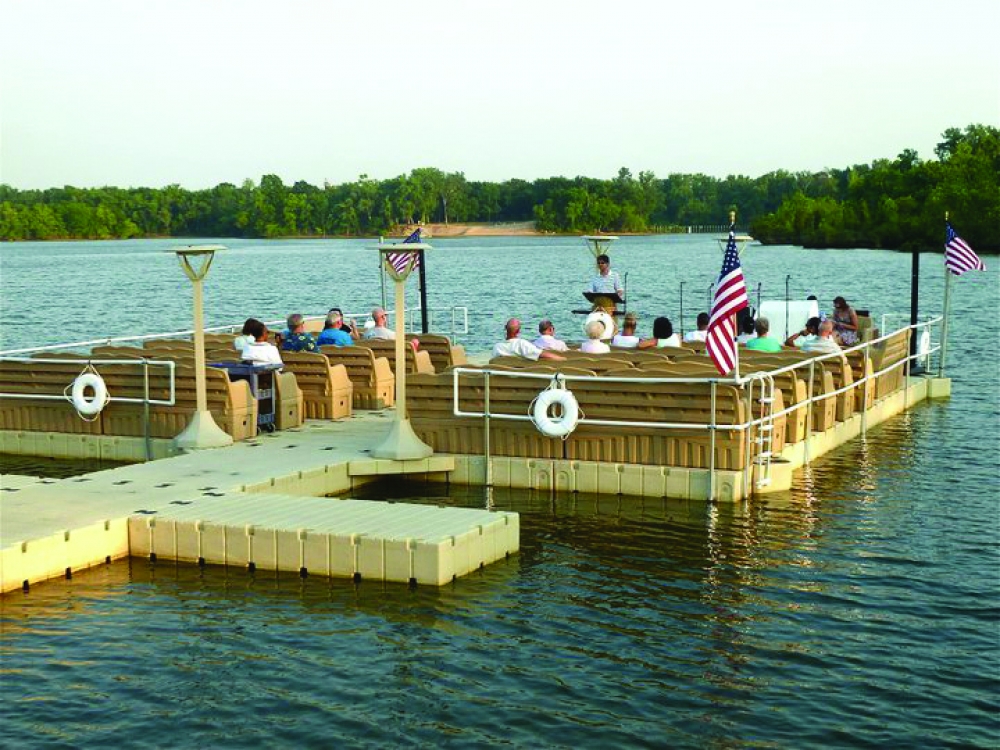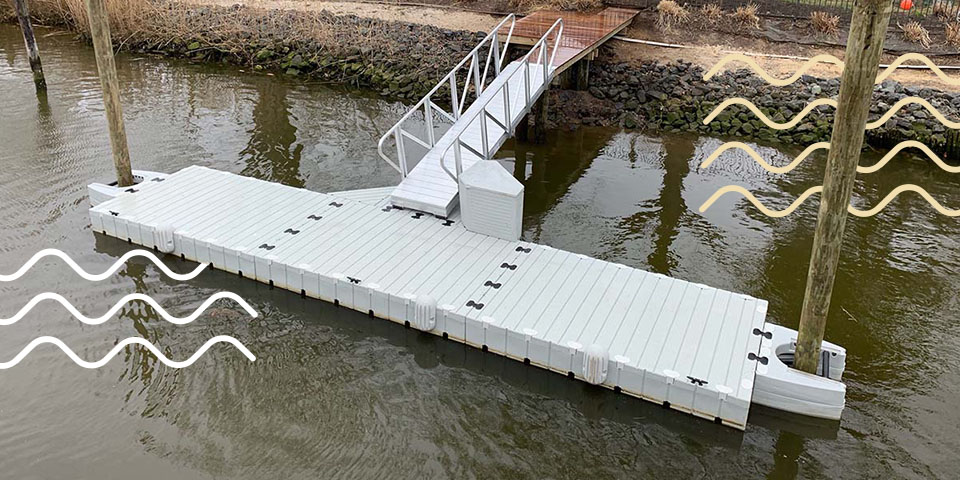Crafting Custom Solutions: Why a Floating Dock Builder is Important for Distinct Requirements
Upgrade Your Beachfront With Sturdy Floating Docks
Upgrading your waterfront with long lasting floating docks can considerably boost both performance and aesthetic appeals, giving a flexible remedy for numerous water tasks. With a range of materials offered, including low-maintenance options and traditional wood, selecting the ideal dock can enhance your individual style and satisfy useful demands.
Advantages of Floating Docks
Floating docks deal a wide variety of advantages that boost their appeal for various maritime applications. One of the key advantages is their adaptability to transforming water levels - floating docks. Unlike standard set docks, floating docks increase and autumn with the tide, making certain regular accessibility for boats and watercraft no matter environmental conditions. This function considerably lowers the risk of damage to vessels, as they stay firmly anchored even during variations in water deepness.
Additionally, floating docks are much easier to install and transfer, providing adaptability for seasonal or short-lived usage. Their modular style enables modification to fit particular needs, whether for personal marinas, residential beachfronts, or business applications.
Moreover, floating docks produce marginal disruption to the water environment, preserving local ecological communities and lowering the likelihood of disintegration. They also supply enhanced security and security for individuals, as their buoyant nature offers an extra flexible surface area than inflexible frameworks.
Furthermore, floating docks can facilitate a varied variety of tasks, such as angling, swimming, and leisure boating, making them an important asset for waterfront growth. Their convenience and practicality make floating docks a recommended option for a variety of maritime projects.
Picking the Right Products
Selecting ideal materials for floating docks is vital to their durability, performance, and general effectiveness. When choosing materials, take into consideration factors such as environmental direct exposure, maintenance demands, and structural honesty. Typical materials consist of wood, plastic, light weight aluminum, and composite choices, each offering distinctive advantages and downsides.
Timber, while cosmetically pleasing, requires regular upkeep to stop rot and degeneration. Pressure-treated timber can boost resilience, however it might still surrender to water damages in time. Plastic floats, frequently made from high-density polyethylene, are immune to rust and call for marginal maintenance, making them an appealing selection for low-maintenance applications.
Aluminum is an additional sensible alternative, understood for its toughness and light-weight residential properties. It is immune to rust and can endure rough climate condition, although it might be more pricey than various other products. Compound materials combine the very best features of wood and plastic, supplying a low-maintenance and resilient alternative that mimics the look of wood without the connected downsides.
Ultimately, the selection of material need to line up with the planned use, ecological considerations, and budget plan constraints, making certain a functional and sturdy floating dock that satisfies your details needs.
Installment Process Summary
The effective installation of a floating dock counts on careful planning and implementation, ensuring that it operates properly in its intended environment. The very first action involves examining website conditions, including water depth, coastline attributes, and dominating weather patterns, which will notify the dock layout and anchoring system.
Following the site evaluation, the next stage is to prepare the floating dock parts. This includes putting together the framework, safeguarding drifts, and attaching any required hardware. It is vital to make certain that all connections are water-resistant and robust to endure marine conditions.
When the dock is set up, the setup procedure starts with placing the dock in the water. This can entail a crane or various other training tools, specifically for bigger frameworks. Appropriate positioning is necessary for capability and safety and security.

Upkeep Tips for Durability
Routine maintenance is necessary for useful content making certain the durability and ideal performance of a drifting dock. To accomplish this, start with regular evaluations at the very least twice a year, concentrating on the stability of the dock's framework, including the flotation a knockout post gadgets and linking hardware. Try to find signs of damage, rust, or wear, and deal with any problems without delay to stop additional deterioration.
Cleaning up is an additional critical element of upkeep. Get rid of debris, algae, and barnacles from the dock's surface to avoid slippery problems and keep visual appeal. Use a moderate cleaning agent and a soft brush to avoid damaging the dock's materials.
In addition, ensure that the dock is correctly secured and safeguarded to hold up against seasonal changes in water levels and weather. Inspect the anchoring system for stability and make modifications as needed.
Enhancing Your Exterior Visual
To develop an aesthetically enticing exterior room, including a drifting dock can dramatically boost the total visual of your beachfront property. Floating docks are not just useful however can likewise work as a striking prime focus that matches the natural environments - dock company. Readily available in numerous materials and styles, these docks can be customized to match your property's building design and landscape
The addition of decorative elements, such as incorporated illumination or trendy railings, better boosts the dock's visual appeal. Take into consideration making use of all-natural wood finishes, which mix effortlessly with the environment, or opting for modern-day materials like light weight aluminum or composite outdoor decking that provide a streamlined, modern look.
Purposefully putting planters or seating locations on or around the dock can produce inviting rooms that encourage leisure and pleasure of beachfront views. Additionally, including colors and Look At This appearances that harmonize with your landscape will certainly create a natural aesthetic throughout your exterior area.

Conclusion

Upgrading your beachfront with resilient floating docks can significantly improve both capability and aesthetic appeals, giving a versatile option for numerous water activities. Unlike standard set docks, floating docks increase and autumn with the trend, ensuring constant availability for watercrafts and watercraft regardless of environmental problems.Picking suitable products for floating docks is important to their durability, efficiency, and total performance.Once the dock is put together, the setup procedure begins with placing the dock in the water.In recap, floating docks deal countless benefits, consisting of adaptability to water level changes and a variety of product alternatives.